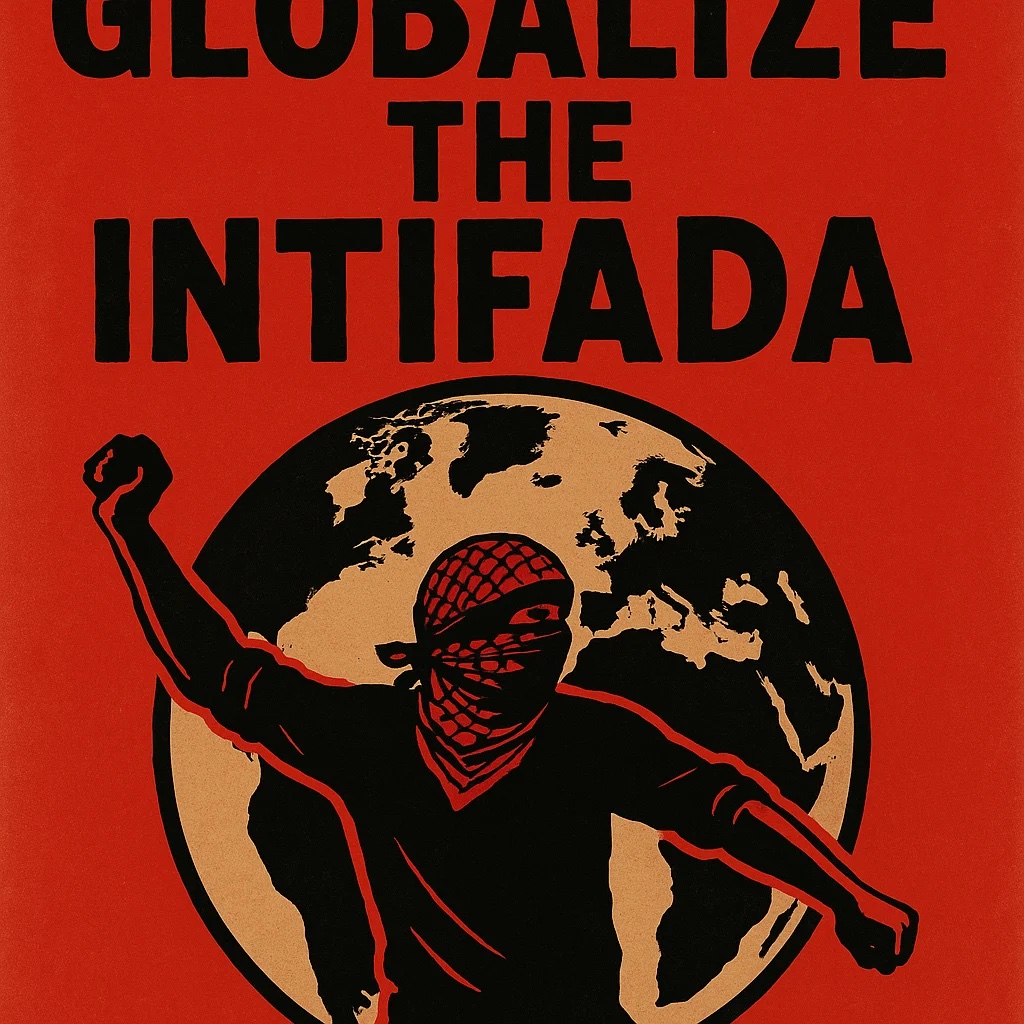Features
David Asper has brought excitement to a new generation of basketball fans with the Winnipeg Sea Bears

By BERNIE BELLAN
June 8, 2023 The name David Asper has long been associated with Winnipeg sports teams.
A former Chair of the Winnipeg Blue Bombers – and someone who achieved both notoriety for how directly involved he became with that team – even going so far as to invade the locker room after a particularly brutal loss (only to be pushed out by now CEO Wade Miller), Asper was also involved with a pro basketball team known as the Winnipeg Thunder, which played here from 1992-94.
This past year, however, Asper took another foray into sports at the ownership level with Winnipeg’s newest sports franchise, the Winnipeg Sea Bears.
The Sea Bears play in a summer league – which is also when the Winnipeg Thunder, a team in which Asper also had an owership stake played. (Another team, the Winnipeg Cyclone, owned by Earl Barish, played in the winter.),
The Sea Bears franchise is the newest addition to what is now a 10-team All Canadian league known as the Canadian Elite Basketball League. So far, by any measure, the team is off to a roaring start.
Recently I chatted with Asper about what led him to enter – again, into the risky world of professional sports and why he’s confident that this time around, the Sea Bears and the league they play in, will be lasting successes.
I began by asking him whether he’s pleased with the attendance at Sea Bears games thus far? (At the time of our conversation the team had played five home games, with an average attendance over 4,000 each game.)
“Yes, I’m very pleased with the reception we’ve gotten so far,” Asper said, “but it’s my nature – it’s the entrepreneur’s curse, to be very cautious about it, because when we began – when you start a business – any business, you never know whether anyone’s going to actually show up and, if they do, whether they’ll keep coming back.”
I suggested to Asper that the history of pro basketball teams in Winnipeg is less than impressive, but he responded that the Winnipeg Thunder actually did “very well,” but “both leagues that the team was affiliated with collapsed.”
“The Thunder played in the summer. The Cyclone played in the winter. I had a better perspective of seeing what would happen if you played in the summer – which is what appealed to me about this league,” Asper added.
I asked, “How far back in time did your planning for the Sea Bears begin?”
Asper said he “started in the spring of ’22, spent time all last summer going across country to games, and then I decided I really liked what I was seeing. I was concerned about the show – the competitiveness of the basketball – and I’m not a basketball person, but I think I have a sense of when something is entertaining and athletic.
“By mid-summer we thought we were going to go for it, we had some negotiation with the league, and we were finally able to announce – late, relatively speaking, at the end of November. We put ourselves in quite a time crush being able to launch for 2023 because training camp starts mid-May, so we only had five months really. We had to hire staff, get tickets out and get ourselves prepared, so it’s been a very hectic time.”
I said to Asper that I wasn’t all that familiar with the Canadian Elite Basketball League and he did give me some of the league’s history, but after the interview I dug deeper into the league’s history.
The CEBL is now in its fifth season, having begun in the summer of 2019, originally with six teams, which were all owned by the league. It now has ten teams in two divisions, from six different provinces:The east division is made up of one team in Quebec (in Montreal), and four in Ontario (in Brampton, Niagara, Ottawa, and Scarborough); and a west division: one in Manitoba (the Sea Bears), one in Saskatchewan (in Saskatoon); two in Alberta (in Calgary and Edmonton), and one in BC (in Langley).
While five of the teams are still owned by the league, there are now five private owners – in Langley, Calgary, Edmonton, and Scarborough, in addition to Asper in Winnipeg.
For the most part the teams play in smaller venues, with the exception of the Sea Bears, who play in Canada Life Centre, which can hold over 15,000 (although seating is confined to the lower level).
Another difference between the CEBL and other leagues that have come and gone in Canada is the heavy emphasis on Canadian players on each team. As Asper explained, each team has 10 players, of whom six have to be Canadian, three can be American, and a tenth can be international.
“We collaborate with Basketball Canada,” Asper observed, and it is a great opportunity for Canadian university players to hone their skills.
Not only that, Asper added that “last year nine players coming out of our league signed NBA contracts,” which gives you an idea what a high level of basketball is played in the CEBL.
According to Wikipedia, each team operates under a salary cap of only $8,000 per team per game. (There are 20 regular games, followed by a round robin playoff tournament modeled on the NCAA Final Four tournament.)
I asked Asper about what I described as his “abiding interest in sports,” given his history of involvement with both pro basketball and football teams.
He said that he thinks “sport is an important part of culture.”
“Where does it come from?” I asked.
“Well, I played sports as a kid,” Asper answered. “I didn’t play basketball, but I’ve seen the power of sports to be inclusive, to be inspirational, to be a shared common experience. I believe very strongly – I know that others in the arts community will dispute it, but I believe sports is as integral to culture as is art and other forms of activities.”
I asked Asper about the role he played in the building of IG Field (where the Blue Bombers now play).
He said that it was never his idea to build a new stadium at the University of Manitoba.
“My plan was to build it at Polo Park and I had everyone lined up and agreed to build it there. I don’t know what happened. I had led the whole project and Greg Selinger wound up taking it over.
I remarked: “Oh yah, I remember, there was an election.”
Turning back to the Sea Bears, I observed that, from pictures in the paper and what I had seen on TV, the team has been drawing a much younger crowd than say the Bombers or Jets – and a far more diverse crowd ethnically. I asked Asper whether that was part of the plan when he thought of starting a basketball team here.
He said, “The answer is yes. When I went across the country last summer and went to games and talked to fans, you could visibly see who was there and a lot of them were young families. There were also grandparents – people my age. It was a broader demographic than I thought it would be. I think that seeing young people at a game is very appealing to a broad age demography, but Bernie, when I would talk to first or second generation Canadians at those games, these were not people who grew up with hockey or football, but for them – basketball – when I talked about shared common experience and shared culture, I’m talking about these families – these new Canadians, meeting with legacy, old Canadians and having a shared common experience as Canadians that was so heart-warming. I said: ‘I want to be part of this.’
“It may be relatively small compared to football and hockey, but it’s doing a service. It’s serving a larger purpose, and what we’ve seen at the games so far – and it really overwhelms me, is that’s exactly what’s happening in Winnipeg.”
“I was talking to kids at the last game – they were part of two youth groups, who had never been to Canada Life Centre and came for the first time to a basketball game – and it blew their minds. They could not believe how great this was – predominantly new Canadians.”
I asked what the ticket price structure is?
Asper said, “They start at roughly 20 bucks. We try to have an entry point for families that’s very accessible.”
I asked whether Ruth (David’s wife) is involved with the team (since she was pictured seated along side David at the first game)?
Asper said, “No, but she’s the team’s number 2 fan.” He also told me that Ruth has a very strong background herself in sports.
I said that I remembered when she was co-owner of Tights, along with other fitness centers in Winnipeg over the years.
Asper said, “Not only that, but Ruth was the trainer for the (University of Manitoba) Bisons football team and she was the trainer for the Churchill Bulldogs football team. She’s in the Churchill Bulldogs Hall of Fame. She really has an experiential perspective on sports. She’s not involved, but she certainly knows the owner – let’s put it that way.”
I wondered about the stability of this particular basketball league – given the past failures of other basketball leagues that had Winnipeg franchises.
“Have there been any teams that have dropped out since the league started five years ago?” I asked.
“There was a team in Newfoundland, and it dropped out,” Asper answered. “Other teams have moved to different markets, so Hamilton moved to Brampton, Guelph had a team that moved to Calgary – which was important because that created a west and an east division. The league has seen unparalleled success this year. The growth in the league is really quite remarkable.”
Asper also noted that “We’re trying to build a sustainable summer event, so it takes a significant investment to start a team up, but the owners who are either starting or acquiring franchises are very committed to investing and growing. The league itself has come through its start-up anarchy, which is always the case in a start-up anything and now it’s moving into scaling up – because it’s working. People want to see this product.”
He also observed that the league is very competitive. Because it’s such a short season (only 20 games), “every single game matters.”
Asper explained that “we have a unique ending to the games” (in the CEBL). “Instead of the clock just running out – like you’d see in an NBA game, where you’d see them try to manage the clock, where the team that’s winning will try to run out the clock and the team that’s losing will try to create fouls and slow it down, what we do is, at the first stoppage in play with close to four minutes left to go in the game we create what’s called a ‘target score,’ so we add nine to the leading team’s score, so that, for example, the score is 84-80, then we turn off the clock, and the first team to 93 wins.
“So, not only does every game matter, the way the games end are so exciting that people leave feeling exhilarated or demoralized. There’s a really emotional way that our games end that really creates a compelling fan experience.”
I asked: “Anything else you want to add?”
Asper said: “Get your tickets at seabears.ca!”
Features
Is This the End of Jewish Life in Western Countries?

By HENRY SREBRNIK “Globalize the Intifada” has been the chant echoing through streets since October 7th, 2023. It was never a metaphor, and we now see the gruesome results across the western world, from Australia to Canada: the rise of groups of large, active networks of Islamist and anti-Zionist organizations.
Jews in the West are discovering that the nations they defended, enriched, and profoundly shaped have become increasingly inhospitable. After the Holocaust, explicit Jew-hatred became unfashionable in polite society, but the impulse never disappeared. The workaround was simple: separate Zionism from Judaism in name, then recycle every old anti-Jewish trope and pin it on “the Zionists.”
We have seen the full legitimization of genocidal anti-Zionism and its enthusiastic adoption by large segments of the public. The protests themselves, as they began immediately on October 7th, were celebrations of the Hamas massacres. The encampments, the building occupations, the harassment campaigns against Jewish students, the open calls for intifada, the attacks on Jews and Jewish places have become our new norm. History shows us that antisemitism does not respond to reason, incentive or the honest appeals of the Jewish community.
Outside the United States, there is no Western political establishment with either the will or the capability to address this problem, let alone reverse its growth. I’m sorry to say this, but the future of Western Europe, Canada, Australia, and New Zealand is likely to be increasingly Jew-free.
Today, police stand and watch mobs chant for Israel’s destruction, call for the genocide of its people, harass visibly Jewish citizens, and drive antisemitic intimidation deep into urban life. They now believe their job is to enforce the law only if it does not risk upsetting violent constituencies. This makes Jews expendable, because defending them risks confrontation. This was very clear in the Bondi Beach massacre.
Jews are again donning caps instead of kippot, dressing generically with no cultural markers, and avoiding even a tote bag with Hebrew on it. A corrosive creep toward informal segregation in retail and service sectors is occurring, as Jewish customers report being refused service. A mezuzah hanging from a rideshare mirror leads to cancellations. When Jews express frustration, they are accused of exaggeration or attempting to suppress criticism of Israel. Jewish fear is not treated as a real problem.
“Jews Are Being Sent Back into Hiding,” the title of a Dec. 15 article in the New York Free Press by David Wolpe and Deborah Lipstadt, asserts that the attacks on Jews, including physical assaults, social media campaigns and, most tragically, the recent murders in Australia, are part of a purposive campaign designed to make Jews think twice about gathering with other Jews, entering a synagogue, going to kosher restaurants, putting a mezuzah on the doorpost of their apartments or dorm rooms, or wearing a Jewish star around their necks.
“We know of no one who would consider giving a niece, nephew, grandchild, or young friend a Jewish star without first asking permission of their parents,” they write. The unspoken, and sometimes spoken, question is: “Might wearing a star endanger your child’s well-being?”
Recently, a prominent American rabbi was entering a Target store in Chicago with her grandson, whom she had picked up from his Jewish day school. As they walked into the store the 10-year-old reached up and automatically took off his kippah and put it in his pocket. Seeing his grandmother’s quizzical look, he explained: “Mommy wants me to do that.”
Borrowing a phrase from another form of bigotry, they contend that Jews are going “back into the closet.” No public celebration of Hanukkah took place in 2025 without a significant police presence. Some people chose to stay home.
Lipstadt and Wolpe know whereof they speak. They are respectively a professor of history and Holocaust studies who served as the Biden administration’s ambassador tasked with combating antisemitism, the other a rabbi who travels to Jewish communities throughout the world, and who served on Harvard’s antisemitism task force in the aftermath of the October 7, 2023 pogrom.
What the world has seen over the past two years is a continual, often systematic attempt to terrorize Jews. When political leaders fail to condemn rather than merely “discourage” chants of “globalize the intifada,” we are seeding the ground for massacres like the Hannukah one in Sydney.
If each Jewish holiday will now be seen by antisemites as an opportunity for terror, then the prognosis for diaspora Jewry is bleak. There will be fewer public events, more alarms, more bag checks at doors; there will have to be more security and more police. Unless things change, Jewish life in the diaspora will become more sealed off from the larger society.
Why has this failure come about? Confronting antisemitism, stopping the mobs, challenging the activists, and disciplining antisemitic bureaucrats all carry electoral risk for politicians; Jews are demographically irrelevant, especially compared with Muslim voters, with the U.S. being the only partial exception.
There are those who suggest Jews stop donating funds to educational and other institutions that have turned against us. At this point, I doubt very much that withdrawing dollars will have an impact. For every dollar withdrawn, there will be 100 from Qatar and other sources in its place.
Throughout history, the way a society treats its Jews predicts its future with unerring accuracy. If Jews leave, it will be because a civilization that will not defend its Jews will also defend next to nothing and may itself not survive.
Henry Srebrnik is a professor of political science at the University of Prince Edward Island
Features
Canadian Travel Trends 2025 and the Forecast for 2026

Canadians planning to travel in 2026 should keep an eye on shifting trends and learn what’s coming their way in the new year.
Canadian travel has seen a fair amount of change and instability over the last few years, thanks mostly to the country’s southern neighbours. In 2025, and likely into 2026, travel trends in the Great White North have stabilized significantly, with more Canadians than ever choosing to travel within their own borders. And with 2026 nipping at our heels, let’s take a look at what trends in 2025 have been the most prevalent and how these will shape travellers’ decisions and travel plans in the new year.
Canadian Travel in 2025
Thanks to many factors, including politics, inflation, and airline competition, the majority of travellers opted to explore their own country rather than go abroad in 2025. More local travel money is remaining within the local economy, further bolstering it and making it an even more attractive travel choice. Thanks to the accessibility of private jet charter travel across Canada, luxury local travel has increased as well, with more people looking to immerse themselves in luxury from the start of their journey to the end. When travelling abroad, the U.S. is now the least favoured destination for most Canadian travellers, but Europe saw a significant increase in interest as 2025 progressed.
As local Canadian travel increased this year, it brought with it a drive for local tourists to find their own “Secret Canada” destinations. Far more “off the beaten path” trips were taken, resulting in more travel spending going to smaller or more boutique destinations rather than big city experiences. In 2025, travellers have sought out the wonderful diversity in destinations and landscapes, allowing themselves to access more grounded and authentically Canadian experiences.
Canada’s Government has also encouraged and benefited from local tourism, with initiatives like the Canada Strong Pass offering extra benefits. Initially implemented in the summer, but reintroduced from December 12, 2025, until January 15, 2026, this is a ticket to enjoying the richness of their own culture (iconic natural destinations, museums, train trips) at a discounted rate or even in some cases free of charge.

In the second quarter of 2025, locals took a total of 90.6 million trips that included at least some time spent travelling domestically, which indicated a rise of 10.9% on a year-over-year basis. Of these trips, 58.6 million were day trip experiences (an increase of 12.4%), and 32.0 million were overnight trips or longer (an increase of 8.4%).
Between April and June of this year, Canadian residents spent $20.3 billion on local tourism, which represented a 13.5% year-over-year increase. When undertaking day trips, Canadians spent approximately $101 per visit. On overnight trips, locals spent around $449 per trip, with an average trip length of 2.6 nights. The Great White North is clearly holding its own, and then some, in the international travel market.
Canadian Travel in 2026
As we move towards 2026, many trends from 2025 will remain the standard, but some will evolve to fit changing demands. Across the board, though, the outlook for the coming year is that Canadian travel will become a far more personal thing, with trips being customized to fit travellers’ requirements and desires more closely than ever before. From choosing a hotel that they feel smacks of a beloved destination in their favourite novel, to taking a trip to a destination just to try a snack that’s famously made there and only there, travel is stretching and shifting for the traveller rather than the other way around.
Here are some slightly more specific predictions for the coming year based on the answers of polled Canadians.

- One Gen Z-led trend is the idea of “glowmad travel”. Beauty and skincare are now influencing the places that Gen Z travels, and their trips are far more likely to include visits to skincare and beauty destinations like spas and luxury stores.
- Gen Z adults are helping to drive another trend: family travel as a way to save money. 345 of Gen Z adults polled say that they would take this route.
- More than 70% of Canadians are considering some sort of mountainous getaway in 2026, specifically in summer or autumn.
- 48% of polled Canadians say they would book or consider a destination thanks to the influence of literature.
- More travellers than ever are choosing their destinations based on the accommodations available. 44% of polled travellers say that in 2026, accommodation and what it can offer comes first, and the surrounding destination comes second.
The World Is Your Nova Scotia Lobster Roll
Choose something a little different when you vacation this year. Oysters are great, but a Nova Scotia lobster roll might be more to your taste! Canadians know good travel, so take a maple leaf out of their book and experience something new this year.
Features
Fake IDs and Underage Bettors: The Growing Problem for Sportsbooks
The expansion of legalized sports betting worldwide has resulted in sportsbooks grappling with a problem that they can no longer overlook: the increase in underage individuals using counterfeit identification to place bets. As more and more ways to bet through mobile apps and online sign-ups emerge, minors who are set on their goal are inventing ways to get around age limits. The emergence of this trend is a breach of the law and morality; however, it is also an enormous problem that threatens the very existence of the platforms, which are forced to rigorously obey the regulations .
Why Fake IDs Are Becoming More Sophisticated
Conventional fakes used to be quite simple to recognize—low-quality printing, different fonts for the text, and inconsistent holograms would make them not very reliable for any kind of verification. But counterfeit documents have changed significantly over time. Nowadays, fakes are made better with the help of printing technology and software, and they can even copy barcodes and other scannable features, so their IDs look almost real.
This fact complicates things significantly for sportsbooks, especially those operating online. Most of the time, automated identity verification systems capture a user’s photo and perform basic data matching. In cases where a very good fake ID is used by a teenager who looks older, some systems cannot recognize the trick. Therefore, young bettors have found ways to be able to place wagers through these loopholes.
The Influence of Social Pressure and Online Culture
Social media is a major factor in the increase in risky behavior that minors are engaging in. On various platforms such as Instagram, TikTok, and Reddit, teenagers come across betting slips, parlay wins, and big-payout screenshots that are shared, most probably, by other users. The glamorization of sports betting is leading young people to copy the behavior of influencers, older friends, or even celebrities, as they think that it is the right thing to do.
The competitiveness usually associated with sports is one of the reasons some minors decide to bet on sports. For many, betting becomes another way to engage as a fan—by predicting outcomes, challenging friends, and experiencing the same excitement that adult fans enjoy. Unfortunately, only a small number of minors fully understand the financial risks involved, making them more vulnerable to developing harmful patterns that could continue into adulthood. This is why choosing the most responsible sportsbook, which you can discover more here, is essential. Such platforms provide guidance, enforce safe practices, and ensure regulated play, allowing fans to engage with sports betting in a more informed, secure, and controlled manner.
Sportsbooks Facing Regulatory Pressure
The sportsbooks are being given the task of more closely monitoring and preventing minors from betting on their platforms. If they fail, harsh penalties are possible, including severe fines, loss of a gambling license, and negative publicity that undermines a brand’s trustworthiness. As a result, it is becoming increasingly difficult for people to verify their identities, although this also inconveniences those who are, in fact, legitimate users.
Sportsbooks have to decide between two options that are in conflict with each other: on the one hand, they have to keep the registration process as simple as possible, and on the other hand, they have to carry out age verification in a very thorough manner. The work of balancing is tough, and the underage gamblers are trying all methods to find a way out.
The Rise of Identity Fraud Services
An alarming trend is the emergence of online vendors who openly advertise fake IDs and identity documents. These vendors often claim their products can pass standard sportsbook checks. Some even tailor IDs to specific regions, knowing that certain provinces, states, or countries use verification systems that rely heavily on image comparison rather than live validation.
The availability of these fraudulent services not only empowers minors but also exposes sportsbooks to risks related to stolen identities, money laundering flags, and fraudulent accounts that may later become legal liabilities.
The Consequences for Underage Bettors
While a minor might think that gambling is just a bit of fun without any harm, the outcome can be quite serious. If there is a catching, accounts are closed right away, winnings are confiscated, and parents or guardians, in some cases, are made legally liable for any financial disagreements. Besides that, the risk of developing a gambling problem in the future increases with early exposure to gambling, especially since teenagers are more impulsive and less capable of handling financial risks.
The majority of minors are not aware that sportsbooks keep very detailed records of their activities, including device information and IP addresses. In case a fake ID works one time, using it multiple times will definitely lead to getting caught.
A Growing Problem That Requires Joint Action
Fake IDs and underage betting are issues that have become a major challenge in the industry, and no single stakeholder can solve these problems on their own. Sportsbooks need to enhance their identity verifications, regulators should get prepared for new types of fraud, technology providers have to come up with new solutions more quickly, and parents should always be aware of what their children are doing online. The industry’s rapid development is making this problem more and more urgent because the number of minors trying to get around the safety measures is increasing.
Sports betting can serve as a fun and legal form of entertainment for adults, but the need to protect the youth is what defines the industry and ensures its survival in the long run. As the quality of fake IDs keeps improving and the online culture is more and more inclined to consider betting as a normal activity, sportsbooks must ensure that underage users do not have access and that the environment is safe for all users. They need to do this now more than ever.


